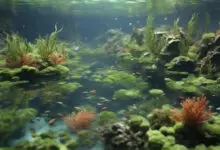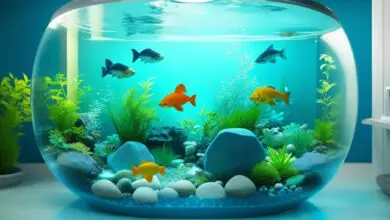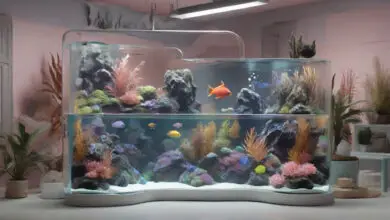Adding Ozone for Aquarium Cleaning

Fish tanks sometimes struggle staying crystal clear and healthy. Water changes alone do not remove all waste or germs fully over time. Filters help but cannot kill off all types of algae and bacteria by themselves. So aquariums need even more cleaning plans to stay balanced right. One useful addition is using an ozone generator to assist with the purification work.
Ozone machines locally produce ozone gas from the oxygen in air. This ozone then dissolves into tank water flowing by to chemically scrub it super clean. All plant and animal life benefits from the improved purity and reduced illnesses able to spread. Ozone offers whole tank care to nicely supplement existing filter efforts.
How Ozone Generators Work
Ozone generators create ozone (O3) gas on site to infuse into aquarium water. Ozone has an extra oxygen atom added to regular oxygen molecules (O2). This makes it a very strong and unstable substance only possible to make electrically. As O3 meets anything else nearby, it rips apart rapidly also splitting molecules in what it touches.
For water treatment, the strong reactions of unstable ozone first shred bigger waste particles suspended. Bacteria and other microorganisms also rupture on contact, getting killed. Finally, redox potential rises allowing remaining dilution byproducts to break down easier too. What leaves reactors becomes super purified and mineralized for marine or freshwater use.
Pros of Using Ozone
When added appropriately, ozone reactors provide varied benefits improving aquarium health a lot. Their gas infusion tackles issues protein skimmers miss for clearer outcomes.
1. Destroys Toxins
Heavy metals, ammonia, nitrites, and dissolved organics meet instant destruction from applied ozone. Tanks achieve deep cleansing of these substances frequently problematic at low levels. Ozone purifies water to optimization better than carbon media alone can match.
2. Kills Viruses and Bacteria
Ozone annihilates most pathogens on contact by bursting cell walls open. Virulent organisms causing fish tuberculosis, dropsy or fungal issues die off instead of spreading further. And without bacteria reproducing out of control, tanks see fewer rounds of antibiotic use needed.
3. Prevents Algae Outbreaks
Reducing excess nutrients in the water starves multiple aggressive algae species. Green hair types have a very hard time taking hold when ozone limits food sources available to spores trying to bloom. Owners spend far less time manually removing stubborn growths after infusing O3.
4. Enhances Oxygen Levels
The extra oxygen atom in ozone converts to regular dissolved O2 once its oxidation Destiny finishes. This keeps oxygen levels always peaked without worrying about suffocation overnight. Higher O2 also allows more stock in heavily filtered tanks because ozone generators supplement air pumps.
Cons of Ozone Reactor Use
While ozone tackles many problems, it also creates a few drawbacks to consider in tank applications. Monitoring its influence helps maximize gains safely.
1. Harms Inhabitants If Overdosed
Too high of ozone blasting can harm fish gills or sensitive invertebrates. Maintaining recommended low concentrations avoids short term safety issues. But long exposures still pose toxicity risks building up or crashing oxygen overnight. Continuous monitoring gives peace of mind.
2. Strips Beneficial Elements Out
The strong redox reactions also remove some positive minerals like iodide and vitamins. This is great forAdvanced tanks trying to export nitrates but reduces nutritional content too far for simple community systems. Owners use trace element dosing to replace stripped components for fish health when relying on reactors too much.
3. Requires Ventilation Precautions
Since ozone is electrically produced and highly reactive, running generators always needs room ventilation and mounting on surfaces safely. Shutoff failures releasing O3 within enclosed stands builds up to risky exposure concentrations rapidly. Never hiding reactors fully out of sight even when ducting exhausts outside remotely.
4. Costs More Upfront Over Other Gear
Units range from $150-400 USD typically for aquarium rated production levels and corrosion resistant housings. Required air pumps add secondary equipment costs too. Justifying spending takes remembering all the supplementary cleaning and medicating ozone infusions may replace longer term. But budget planning for the expensive startup still takes careful thought.
Types of Ozone Generators
Multiple kinds of ozone reactors exist to fit different aquarium sizes and budgets safely. Each type has particular advantages for tailored installation.
1. Del Ozone EcoBox
Compact all in one units like the Del Ozone EcoBox mount inside stand areas easily. Dual ceramic plate systems send air through electrical fields to produce and infuse O3. These starter reactors save space using tiny air pumps to maximize gas transfer into aquariums under 100 gallons wanting purification boosts.
| Del Ozone EcoBox | |
|---|---|
| Pros | Very affordable, compact |
| Cons | Weaker output for larger tanks |
2. ClearWater Tech CD Discharge Ozonizer
When wanting more oomph, ClearWater Tech CD ozonizers output serious gas from dual industrial grade dielectrics. Their high concentrations feed giant tanks over 500 gallons for crystal clarity and pathogen control. Use demands big air pumps supplying pure oxygen to enhance production levels safely. While costly, their stainless steel builds give commercial service for decades in home use.
| ClearWater Tech CD Ozonizer | |
|---|---|
| Pros | Very powerful treatment capacity |
| Cons | Expensive, big air pump required |
3. Coralife Turbo-Twist UV Sterilizer
Hybrid choices like the Coralife Turbo-Twist combine efficient copper core ozone output with added UV clarifying stages too. Water gains double duty purification as bubbles flow under the germicidal lighting. The compact inline shape still fits existing plumbing lines like a fluid filter booster add-on benefiting all sizes of aquarium builds needing amplified help.
| Coralife Turbo-Twist | |
|---|---|
| Pros | Combines ozone and UV together |
| Cons | Moderate ozonation limits |
Ozone Use By Aquarium Type
While ozone upgrades any tank, intended tank purposes change ideal release amounts. Proper dosing target sells the safety and effectiveness best for fish only, reef or planted builds uniquely.
Fish Only Systems
Low ozone concentrations around 0.03-0.05ppm blend safely for freshwater tanks with no live macroalgae or plants. These levels still oxidize organics and kill pathogens for fish but avoid stripping all nutrients growing simple marimo clumps may need.
Planted Aquariums
Sensitive rooted species such as Vallisneria and Echinodorus need limited oxidation retention times under 15 minutes. Quick ozone destruction afterwards avoids harming their delicate cell walls and leaves. Frequent water changes remove some mineral dumping too. Striking the balance for planted tanks takes more precision.
Reef Aquariums
Marine fish and corals better tolerate higher ozone amounts to rid phosphates and nitrates fully. Targeting 0.07-0.09ppm and running reactors overnight handles these excessive nutrients. Protein skimming clears the remaining byproducts the next day.
Matching ozone generators to current livestock avoids safety issues short term while still reaping cleaning rewards.
Installing Ozone Safely
Highly effective ozone use requires setup planning understanding its risks. Preventing unintended leaks or overdosing takes specific mounting considerations and monitoring equipment.
Sealed Off Installation
Since ozone gases themselves pose breathing hazards for people and pets, sealed off installation is crucial. Ducting reactor outlets into prior filtration areas keeps concentrated fumes always contained underwater. Never locating raw generators openly inside tank stands avoids accidental room leaks occurring over time as rings or seals slowly fail. Remote mounting also helps dilute any low-level exhausts piping outside.
Inline Monitoring Cells
Specialized redox probes allow tracking oxidation levels in real time down to 0.01mV gradients. This confirms units produce expected concentrations to gauge cleaning effects. And digital tracking also prevents O3 from shifting dangerously high if any airflow surges happen. Controllers safely power down generators automatically whenever setpoints exceed ideals.
System Backup Paths
Just like hospital equipment relies on backup power sources, ozone reactors need secondary water lines too. Incorporating bypass routes or container battery backups gives insurance if oxidizers ever shut off unexpectedly. Flow continuing unpurified for long batches harms biology used to clean conditions. Failing safely aids inhabitants riding out brief operating gaps.
Dosing Ozone Carefully Into Tanks
Proper ozone infusion starts upstream to maximize contact on way back to displays. But distribution design matters so inhabitants avoid directly contacting concentrated gas bubbles.
Inline Injection Points
Tap water lines offer great injection places for ozonation stages. Flow stabilization from pipe diameters allows better dissolution before exiting reactors. And locating generators right before dechlorinators also eliminates both chloramines and future organics entering tanks.
Mixing Chamber Diffusers
When adding ozone along recirculating loops, diffuser placements optimized dissolution. Bubble pillars or Mazzei venturi injectors mounted within mixing bowels violently blend O3 until full absorption. No bubbles ever reach main displays this way. And JOYON mixer pumps also combine such turbulent blending all self-contained for compact performance.
Multiple Release Locations
Giant systems benefit from multipoint ozone reactors spaced apart. Distributing gas production avoids single unit failures crashing life support. And injecting lesser amounts from each maximizes the contact time for O3 to finish reactions fully before allowing inhabitants exposure. Segmented dosing takes advantage of huge capacities supporting ultra pure water quality.
Using Ozone Effectively Long-term
While setup completes most the work, refining reactor use over time ups reliability further. Owners must perform basic maintenance and output verification to keep oxidation rates optimized regularly.
Cleaning and Replacing Parts
Yearly cleaning of corona discharge plates or UV quartz sleeves reduces fouling buildup. Soaking components in vinegar dissolves scale so electrical fields keep punching out maximum O3. And swapping check valves avoids backflow issues creeping up over time.
Output Testing
Specialized titration kits verify actual ozone levels making it into the tank each month. Samples react with potassium iodide allowing owners to back-calculate concentrations mathematically. Matching outputs to digital redox readings confirms units are calibrating properly for continued safe infusion numbers.
Adjusting Production Rates
If tests show lower than expected outputs but redox still reads regular levels, airflow rates likely dropped. Cleaning prefilters restores oxygen flow so generators keep putting out. And reducing bubble rates by valves brings high numbers down until cleaning brings peaks back up fully. This balances production rates optimally.
Staying ahead of maintenance and monitoring makes ozone continue improving quality for years without toxicity issues. Care pays off long run.
Conclusion
Ozone powerfully clarifies and disinfects aquarium water beyond the limits of standard filtration alone. Reactors outputting O3 infuse unstable gas that first shreds large debris bits apart. This same reaction then extends down micron-level also bursting cell membranes open within single celled organisms floating by. Viruses, bacteria, and parasites die from their vulnerability getting oxidized.
What remains in the water gains even finer purification too. Redox potentials shift letting dilute byproducts break down much easier afterwards. And cleaner conditions starve surviving spores trying to bloom next. Tanks see disease outbreaks reduced and algae kept fully in check from maximized purity.
The extra oxygen atom in ozone also enriches dissolved levels before converting back into regular O2 safely too. Optimizing the helpful effects simply requires smart reactor selection, mounting locations, and monitoring for particular tank purposes. Hobbyists invested in peak stability find amplifying filtration with ozone both saves money medicating long term and keeps enjoyment high…thanks to artificially optimizing another parameter for success!







